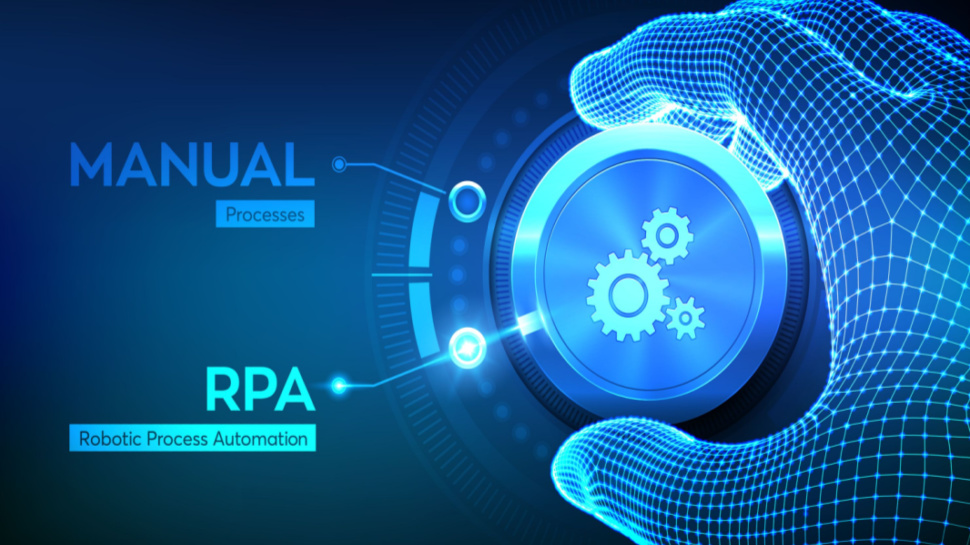Automating the office: Is the intelligent workplace within reach at last?
The maturation of technologies like RPA and AI could deliver on a decades-old promise

As futuristic as it may sound, robotic process automation (RPA) has actually been around for decades, just under different guises. And the broad objective has always been the same: to give businesses a simple way to automate onerous tasks.
The reason few outside the IT department have heard of RPA has to do with the types of tasks it has been able to automate; so-called software robots (an evolution of old-school macros) have typically been well-equipped to follow simple rules, but not to handle exceptions.
However, recent advances in the field of artificial intelligence (AI) promise to expand the scope of RPA, which is increasingly capable of executing complex tasks too. In industry jargon, this is called “hyperautomation”.
One company at the forefront of this movement is Blue Prism, which was acquired earlier this year for $1.65 billion by SS&C Technologies off the back of a period of rapid growth during the pandemic.
The combined entity, SS&C Blue Prism, aims to supply every piece of the automation puzzle - from process mining, to RPA, document processing and chatbots - all of which is underpinned by AI.

In conversation with TechRadar Pro, Eric Tyree, who heads up AI and automation at the firm, explained that the development of large-scale models has turned AI into a readily available utility, opening various doors in the automation space.
“Bringing AI into an organization in a meaningful way is now just simpler, because its ability to automate a type of task is embedded into an RPA robot,” he told us.
Sign up to the TechRadar Pro newsletter to get all the top news, opinion, features and guidance your business needs to succeed!
“From a practical point of view, this has made AI almost commoditizable, giving life to a stumbling revolution. [Previously], the success rate of enterprise AI projects was so low.”
RPA on the rise
The case for greater automation is a compelling one on paper. RPA, the vendors say, reduces the amount of resources spent on repetitive administration, eliminates human error, and liberates employees to focus on tasks that require abstract thought.
In an accounting context, for example, automation could allow professionals to spend less time on bookkeeping and data gathering, and more time on analytics and business strategy.
The customer services sector is also well-primed to benefit. An agent’s main purpose is to engage with customers, but too much time is wasted shifting data across CRM and database systems, something RPA can handle with ease.
Over the last few years, the growth of the global RPA market has been steady, if unspectacular. But analysis from Grand View Research suggests the sector will take off over the next decade, achieving a compound annual growth rate (CAGR) of more than 38% between now and 2030.

The growth trajectory has perhaps been steepened by the need to drive efficiencies during the pandemic, but Blue Prism maintains the market has long been heading in this direction.
“Covid made people realize you can change how businesses operate quickly, and in some cases forced them to. But what’s really driving automation is economics,” explained Tyree. “The old way of thinking about digitization is to rip up legacy systems and replace them, but RPA represents a much lighter and cheaper way to transform.”
He pointed towards the battle between traditional and challenger banks as an example: “Retail banks have traditionally been slow-moving, but they are being eaten alive by fintech. And because they don’t have time to retool their legacy estates in response, they have to automate on top.”
In this scenario, the embrace of automation is not about squeezing out marginal productivity gains that polish the bottom line, but rather a strategic necessity.
Bringing intelligence to the party
Until recently, the grand automation vision has remained somewhat of a fantasy; only the largest businesses in a small minority of sectors have been able to benefit. But there are signs that vendors may soon be able to deliver on the original objective to bring automation to the masses.
Much of the growth in the adoption of RPA is expected to stem from the improved capacity to execute difficult processes and decreased complexity associated with deployment and management.
“In the old days, if you were bringing AI into an organization, you would buy a platform and bring processes to it, which creates all sorts of roadblocks,” explained Tyree.
“RPA has flipped it the other way; you’re attaching AI to RPA and bringing it to the processes and business units you want to automate. Suddenly, appending a chatbot or facial recognition technology to a software robot has become really simple.”
With advances in the spheres of compute and model architecture, the sophistication of these AI-powered RPA bots is bound to increase significantly in the coming years too. We’re on an “exponential trend line”, says Tyree.

The result is two-fold: the rollout of hyperautomation solutions is greatly simplified, and the number of use cases for RPA is expanded to include functions such as analysis, design and monitoring.
And as the largest enterprises scale up their automation deployments, the learnings are also expected to trickle down to smaller and smaller businesses in a succession of waves, making the benefits of RPA increasingly accessible.
“The large organizations of the Fortune 1,000 have now adopted these technologies at scale, which is driving costs down. A second wave of businesses that typically couldn’t even think about this type of technology will now be able to afford it,” said Gautam Moorjani, GM Intelligent Automation Solutions at SS&C Blue Prism.
“Over the next three to ten years, we’re going to see these waves coming together and creating more opportunity.”
Not so fast
Although Tyree and Moorjani are bullish about the potential of hyperautomation, both conceded that there remain a number of roadblocks the industry will need to contend with.
The first is technical. Although developments in compute, storage and networking have paved the way for AI models with trillions of parameters (the greater the number, generally the more performant the model), further advances will be necessary to achieve ubiquitous automation. And there is no guarantee the path forward will be a smooth one.
“We’re not going to see an easy, incremental growth of AI capabilities. It comes in fits and starts,” admitted Tyree. “The big leap in AI right now, for example, came from somebody looking at neural structures and replicating that architecture.”
“There is also a stronger correlation between the cost of compute and AI than people realize. AI is always running ahead of what is feasible economically, and the algorithms are always way ahead of what’s possible from a computational perspective.”
The second factor has to do with culture and perception. Any conversation about workplace automation is bound to lead, eventually, to a discussion about redundancies in the human workforce.

Although it is widely accepted that the rise of automation will change the configuration of the workforce, there is some debate about the extent of this change. The picture painted by the vendors is that automation technologies will play a supporting role, but suspicion prevails.
Tyree gestured towards the field of radiology. Although it has been shown that AI models are capable of equaling the performance of specialists in the diagnosis of malignancies, the experts still express a low level of trust.
There is no RPA involved here, but the same general rule applies across all areas of automation. The bar for the expected performance of AI is much higher; people are unwilling to accept even a small amount of error when a decision has been reached by an automated system.
Others are worried less about performance and more about the prospect of widespread redundancies, which will disproportionately affect workers in the lowest wage brackets by virtue of the kinds of tasks RPA is able to perform.
According to Tyree, it will be possible to aim for zero job losses, but careful management of the transition will be critical. One approach already being adopted by some businesses is to map out the “shortest possible route between skillsets that are no longer needed and those that are”, and attempt to nudge people displaced by automation down these pathways.
“There’s still a natural human worry, that’s still something that needs to be overcome,” added Moorjani. “But the real-life use cases are becoming more and more compelling.”
“It’s about further distinguishing between what’s really a judgement-based decision and what’s not, allowing people to focus on what’s right for their organization. This is all still evolving.”

Joel Khalili is the News and Features Editor at TechRadar Pro, covering cybersecurity, data privacy, cloud, AI, blockchain, internet infrastructure, 5G, data storage and computing. He's responsible for curating our news content, as well as commissioning and producing features on the technologies that are transforming the way the world does business.